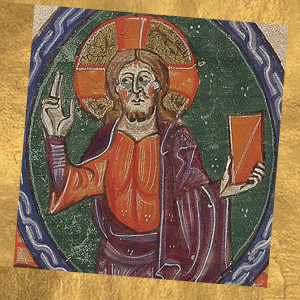Sts. Marcellinus, priest, and Peter, exorcist, martyrs on the via Labicana

Two laurel trees, a wood that has changed its name, a nucleus of catacombs that are today among the most famous in the world: traces of a long-lost nature that endure in writing, and stones that resist the centuries and give solidity to that tradition. This is the humus in which the roots of tradition are planted, which flourish in the story of two Christian martyrs of the fourth century: the priest Marcellinus and the exorcist Peter, whose story is recorded in ancient martyrologies and underground networks of tunnels dug into the clay
The great culling
They year is AD 304. In Rome, the great persecution of Christians ordered by the Emperor, Diocletian, is at its height. This would be the last great culling of Christ’s followers before Constantine’s Edict of Milan, granting legal status to Christians throughout the Roman Empire. The second of the four edicts by which Diocletian plans the annihilation of Christians calls for the arrest of bishops, priests, and deacons. Many are rounded up and put to death by the Roman courts. The priest Marcellinus is one of those arrested and imprisoned. Like so many others, Marcellinus refuses to abjure the faith. Thus, do many prisons become small communities of believers.
The hidden martyrdom
In prison, Marcellinus meets Peter, an exorcist (not a fighter of demons, but one whose responsibilities included those of a modern-day usher or warden). Together they proclaim Christ crucified and risen. Many convert, and ask for Baptism. There are many legends in their hagiography, some of which refer to miracles, such as the healing of the daughter of their jailor. For the judge, they are too much trouble. The two must be reduced to one. Here the story becomes more certain, thanks to Pope St. Damasus, who tells it a few decades after the fact. Marcellinus and Peter are tortured, brought into a wood known as the Black Forest, forced to the last, cruel humiliation - digging their own grazes - and finally decapitated. As far as the law was concerned, justice had been done. The decision to do it in the forest is one final insult: an effort to obscure forever their place of execution. That calculation was mistaken.
The piety of a matron
A Roman matron, Lucilla, came in short order to know the place of their martyrdom. The woman located and moved the remains of Marcellinus and Peter from the Black Wood (Selva Nera) - which from then on will be renamed Selva Candida (White Wood) - to the cemetery today called ad duas lauros, perhaps owing to the presence of two laurels, on the Via Casilina. . Pope St. Damasus composed a hymn - a carmen - that he affixes to the new tomb - and when the Goths destroyed it, Pope Vigil put it back up, and placed the names of the two martyrs in the Canon of the Mass. There would follow a series of more-or-less licit translations of the saints’ relics, but the Roman churches and the catacombs today open and living perpetuate the memory of these two men, a memory that has proven too great to be erased by anonymous burial in unmarked tombs covered by overgrowth.







